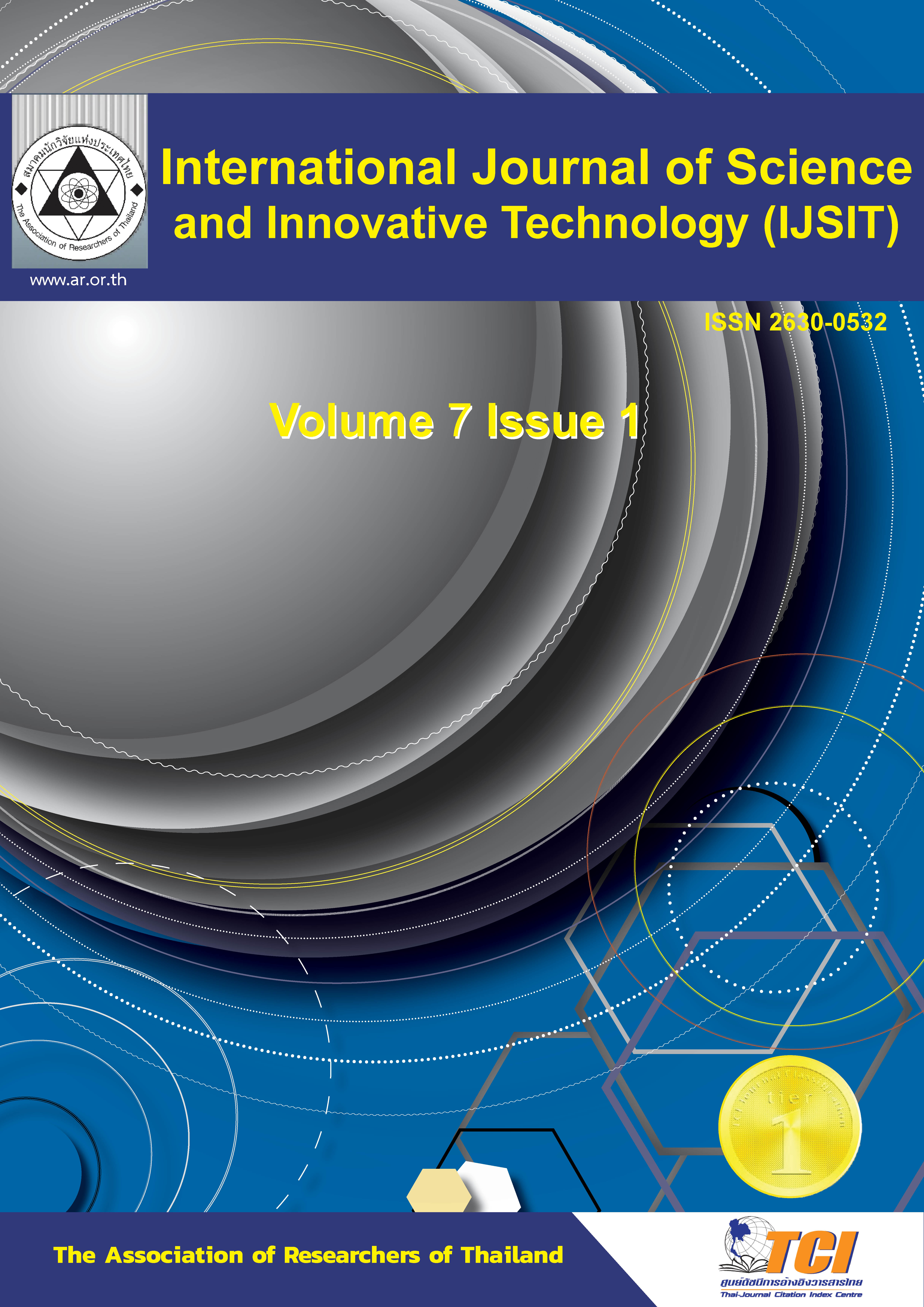The The Enhancement of Split Type Air Conditioner by Improving the Cooling System For Residence
Main Article Content
Abstract
This paper aimed to design an improved cooling system of a split-type air conditioner, to compare the performance of a normal commercial air conditioner and an improved one, and to study the potential of the investment in improving the cooling system. The system consisted of rotary compressors. Its capacity at 12000 BTU / hr. (1 ton of refrigeration) using the air-cooling system and R32 refrigerant. Was a working fluid in the system. It was installed in the testing room with 70 centimeters of wide, 95centimeter of long, and 110 centimeters of high, which was covered with high-quality insulation. The improvements included 1) adding an 80-watt cooling fan in series with the existing one. 2) Installing a 280-watt heat exchanger in series with the existing condenser. In this study, the cooling loads were set at 600, 800,1,000, and 3,000 watts with the incandescent lamp. The testing room temperature was constant at 25 degrees Celsius. It was found that 1) The coefficient of performance and the electrical power of the system by adding the 80-watt cooling fan were at 2.68 and 1.42 kilowatts while the electrical charge lessened by 4.75% and the payback period was 1.98 years. 2) The coefficient of performance and the electrical power of the system by installing the 16- watt heat exchanger in series with the existing condenser were at 6.82 and 3.95 kilowatts while the electrical charge lessened by 9.39% and the payback period was 2.65 years. 3) The coefficient of performance and the electrical power of the system by adding the 80-watt cooling fan with the 16-watt heat exchanger were at 8.98 and 4.16 kilowatts while the electrical charge lessened by 13.89% and the payback period was 2.39 years.
Article Details

This work is licensed under a Creative Commons Attribution-NonCommercial-NoDerivatives 4.0 International License.
References
References
Suthikarn Wongsathian, 2005, Refrigeration and Air Conditioning, Skybooks Publishing, Bangkok,
P 532-543
Thaweewat Supharos, 1998, Heat transfer (Heart transfer), King Mongkut's University of Technology Thonburi, Bangkok, Chapter 10
Somsak Chaiyapinan, 2015, Energy, Heat and Fluid Engineering Design, 2nd edition,
Bangkok , Chula Book Center.
Theeraphong Borirak and Phongsawat Kochapoom, 2013, “Increasing the performance of split air conditioners by reducing Condenser Temperature”, Eastern Asia University Academic Journal, Year 7, Issue 2, pp. 57-64
Ministry of Science technology and environment. (2020). The use of insulators from the Department of
Energy Development and Promotion. Bangkok .
Watchrodom, N. (2018). Coefficient of performance increase for split-type air conditioners using heat loss
Recovery. RMUTSB ACADEMIC JOURNAL. 6(2), 134-147
Tritthaporn Kaewsook and Niran Watchrodom (2023). Investigation of the Thermal Insulation Walls of Coconut Fiber Mixed with Cement. International Journal of Science and Innovative Technology Vol.6 Issue1, January - June 2023 pp.70-77

